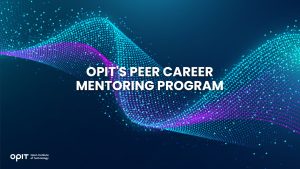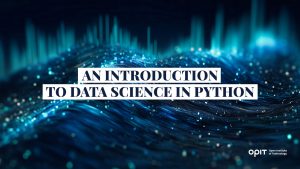

In a database, you have entities (which have attributes), and relationships between those entities. Managing them is key to preventing chaos from engulfing your database, which is where the concept of keys comes in. These unique identifiers enable you to pick specific rows in an entity set, as well as define their relationships to rows in other entity sets, allowing your database to handle complex computations.
Let’s explore keys in DBMS (database management systems) in more detail, before digging into everything you need to know about the most important keys – primary keys.
Understanding Keys in DBMS
Keys in DBMS are attributes that you use to identify specific rows inside a table, in addition to finding the relation between two tables. For example, let’s say you have a table for students, with that table recording each student’s “ID Number,” “Name,” “Address,” and “Teacher” as attributes. If you want to identify a specific student in the table, you’ll need to use one of these attributes as a key that allows you to pull the student’s record from your database. In this case “ID Number” is likely the best choice because it’s a unique attribute that only applies to a single student.
Types of Keys in DBMS
Beyond the basics of serving as unique identifiers for rows in a database, keys in DBMS can take several forms:
- Primary Keys – An attribute that is present in the table for all of the records it contains, with each instance of that attribute being unique to the record. The previously-mentioned “ID Number” for students is a great example, as no student can have the same number as another student.
- Foreign Key – Foreign keys allow you to define and establish relationships between a pair of tables. If Table A needs to refer to the primary key in Table B, you’ll use a foreign key in Table A so you have values in that table to match those in Table B.
- Unique Key – These are very similar to primary keys in that both contain unique identifiers for the records in a table. The only difference is that a unique key can contain a null value, whereas a primary key can’t.
- Candidate Key – Though you may have picked a unique attribute to serve as your primary key, there may be other candidates within a table. Coming back to the student example, you may record the phone numbers and email addresses of your students, which can be as unique as the student ID assigned to the individual. These candidate keys are also unique identifiers, allowing them to be used in tandem with a primary key to identify a specific row in a table.
- Composite Key – If you have attributes that wouldn’t be unique when taken alone, but can be combined to form a unique identifier for a record, you have a composite key.
- Super Key – This term refers to the collection of attributes that uniquely identify a record, meaning it’s a combination of candidate keys. Just like an employer sifting through job candidates to find the perfect person, you’ll sift through your super key set to choose the ideal primary key amongst your candidate keys.
So, why are keys in DBMS so important?
Keys ensure you maintain data integrity across all of the tables that make up your database. Without them, the relationships between each table become messy hodgepodges, creating the potential for duplicate records and errors that deliver inaccurate reports from the database. Having unique identifiers (in the form of keys) allows you to be certain that any record you pull, and the relationships that apply to that record, are accurate and unrepeated.
Primary Key Essentials
As mentioned, any unique attribute in a table can serve as a primary key, though this doesn’t mean that every unique attribute is a great choice. The following characteristics help you to define the perfect primary key.
Uniqueness
If your primary key is repeatable across records, it can’t serve as a unique identifier for a single record. For example, our student table may have multiple people named “John,” so you can’t use the “Name” attribute to find a specific student. You need something unique to that student, such as the previously mentioned ID number.
Non-Null Values
Primary keys must always contain a value, else you risk losing records in a table because you have no way of calling upon them. This need for non-null values can be used to eliminate some candidates from primary key content. For instance, it’s feasible (though unlikely) that a student won’t have an email address, creating the potential for null values that mean the email address attribute can’t be a primary key.
Immutability
A primary key that can change over time is a key that can cause confusion. Immutability is the term used for any attribute that’s unchanging to the point where it’s an evergreen attribute that you can use to identify a specific record forever.
Minimal
Ideally, one table should have one attribute that serves as its primary key, which is where the term “minimal” comes in. It’s possible for a table to have a composite or super key set, though both create the possibility of confusion and data integrity issues.
The Importance of a Primary Key in DBMS
We can distill the reason why having a primary key in DBMS for each of your tables is important into the following reasons:
- You can use a primary key to identify each unique record in a table, meaning no multi-result returns to your database searches.
- Having a primary key means a record can’t be repeated in the table.
- Primary keys make data retrieval more efficient because you can use a single attribute for searches rather than multiple.
Functions of Primary Keys
Primary keys in DBMS serve several functions, each of which is critical to your DBMS.
Data Identification
Imagine walking into a crowded room and shouting out a name. The odds are that several people (all of whom have the same name) will turn their heads to look at you. That’s basically what you’re doing if you try to pull records from a table without using a primary key.
A primary key in DBMS serves as a unique identifier that you can use to pull specific records. Coming back to the student example mentioned earlier, a “Student ID” is only applicable to a single student, making it a unique identifier you can use to find that student in your database.
Ensure Data Integrity
Primary keys protect data integrity in two ways.
First, they prevent duplicate records from building up inside a single table, ensuring you don’t get multiple instances of the same record. Second, they ensure referential integrity, which is the term used to describe what happens when one table in your database needs to refer to the records stored in another table.
For example, let’s say you have tables for “Students” and “Teachers” in your database. The primary keys assigned to your students and teachers allow you to pull individual records as needed from each table. But every “Teacher” has multiple “Students” in their class. So, your primary key from the “Students” table is used as a foreign key in the “Teachers” table, allowing you to denote the one-to-many relationship between a teacher and their class of students. That foreign key also ensures referential integrity because it contains the unique identifiers for students, which you can look up in your “Students” table.
Data Retrieval
If you need to pull a specific record from a table, you can’t rely on attributes that can repeat across several records in that table. Again, the “Name” example highlights the problem here, as several people could have the same name. You need a unique identifier for each record so you can retrieve a single record from a huge set without having to pore through hundreds (or even thousands) of records.
Best Practices for Primary Key Selection
Now that you understand how primary keys in DBMS work, here are some best practices for selecting the right primary key for your table:
- Choose Appropriate Attributes as Candidates – If the attribute isn’t unique to each record, or it can contain a null value (as is the case with email addresses and phone numbers), it’s not a good candidate for a primary key.
- Avoid Using Sensitive Information – Using personal or sensitive information as a primary key creates a security risk because anybody who cracks your database could use that information for other purposes. Make your primary keys unique, and only applicable, to your database, which allows you to encrypt any sensitive information stored in your tables.
- Consider Surrogate Keys – Some tables don’t have natural attributes that you can use as primary keys. In these cases, you can create a primary key out of thin air and assign it to each record. The “Student ID” referenced earlier is a great example, as students entering a school don’t come with their own ID numbers. Those numbers are given to the student (or simply used in the database that collects their data), making them surrogate keys.
- Ensure Primary Key Stability – Any attribute that can change isn’t suitable for use as a primary key because it causes stability issues. Names, email addresses, phone numbers, and even bank account details are all things that can change, making them unsuitable. Evergreen and unchanging is the way to go with primary keys.
Choose the Right Keys for Your Database
You need to understand the importance of a primary key in DBMS (or multiple primary keys when you have several tables) so you can define the relationships between tables and identify unique records inside your tables. Without primary keys, you’ll find it much harder to run reports because you won’t feel confident in the accuracy of the data returned. Each search may pull up duplicate or incorrect records because of a lack of unique identifiers.
Thankfully, many of the tables you create will have attributes that lend themselves well to primary key status. And even when that isn’t the case, you can use surrogate keys in DBMS to assign primary keys to your tables. Experiment with your databases, testing different potential primary keys to see what works best for you.
Related posts

Source:
- Raconteur, published on November 06th, 2025
Many firms have conducted successful Artificial Intelligence (AI) pilot projects, but scaling them across departments and workflows remains a challenge. Inference costs, data silos, talent gaps and poor alignment with business strategy are just some of the issues that leave organisations trapped in pilot purgatory. This inability to scale successful experiments means AI’s potential for improving enterprise efficiency, decision-making and innovation isn’t fully realised. So what’s the solution?
Although it’s not a magic bullet, an AI operating model is really the foundation for scaling pilot projects up to enterprise-wide deployments. Essentially it’s a structured framework that defines how the organisation develops, deploys and governs AI. By bringing together infrastructure, data, people, and governance in a flexible and secure way, it ensures that AI delivers value at scale while remaining ethical and compliant.
“A successful AI proof-of-concept is like building a single race car that can go fast,” says Professor Yu Xiong, chair of business analytics at the UK-based Surrey Business School. “An efficient AI technology operations model, however, is the entire system – the processes, tools, and team structures – for continuously manufacturing, maintaining, and safely operating an entire fleet of cars.”
But while the importance of this framework is clear, how should enterprises establish and embed it?
“It begins with a clear strategy that defines objectives, desired outcomes, and measurable success criteria, such as model performance, bias detection, and regulatory compliance metrics,” says Professor Azadeh Haratiannezhadi, co-founder of generative AI company Taktify and professor of generative AI in cybersecurity at OPIT – the Open Institute of Technology.
Platforms, tools and MLOps pipelines that enable models to be deployed, monitored and scaled in a safe and efficient way are also essential in practical terms.
“Tools and infrastructure must also be selected with transparency, cost, and governance in mind,” says Efrain Ruh, continental chief technology officer for Europe at Digitate. “Crucially, organisations need to continuously monitor the evolving AI landscape and adapt their models to new capabilities and market offerings.”
An open approach
The most effective AI operating models are also founded on openness, interoperability and modularity. Open source platforms and tools provide greater control over data, deployment environments and costs, for example. These characteristics can help enterprises to avoid vendor lock-in, successfully align AI to business culture and values, and embed it safely into cross-department workflows.
“Modularity and platformisation…avoids building isolated ‘silos’ for each project,” explains professor Xiong. “Instead, it provides a shared, reusable ‘AI platform’ that integrates toolchains for data preparation, model training, deployment, monitoring, and retraining. This drastically improves efficiency and reduces the cost of redundant work.”
A strong data strategy is equally vital for ensuring high-quality performance and reducing bias. Ideally, the AI operating model should be cloud and LLM agnostic too.
“This allows organisations to coordinate and orchestrate AI agents from various sources, whether that’s internal or 3rd party,” says Babak Hodjat, global chief technology officer of AI at Cognizant. “The interoperability also means businesses can adopt an agile iterative process for AI projects that is guided by measuring efficiency, productivity, and quality gains, while guaranteeing trust and safety are built into all elements of design and implementation.”
A robust AI operating model should feature clear objectives for compliance, security and data privacy, as well as accountability structures. Richard Corbridge, chief information officer of Segro, advises organisations to: “Start small with well-scoped pilots that solve real pain points, then bake in repeatable patterns, data contracts, test harnesses, explainability checks and rollback plans, so learning can be scaled without multiplying risk. If you don’t codify how models are approved, deployed, monitored and retired, you won’t get past pilot purgatory.”
Of course, technology alone can’t drive successful AI adoption at scale: the right skills and culture are also essential for embedding AI across the enterprise.
“Multidisciplinary teams that combine technical expertise in AI, security, and governance with deep business knowledge create a foundation for sustainable adoption,” says Professor Haratiannezhadi. “Ongoing training ensures staff acquire advanced AI skills while understanding associated risks and responsibilities.”
Ultimately, an AI operating model is the playbook that enables an enterprise to use AI responsibly and effectively at scale. By drawing together governance, technological infrastructure, cultural change and open collaboration, it supports the shift from isolated experiments to the kind of sustainable AI capability that can drive competitive advantage.
In other words, it’s the foundation for turning ambition into reality, and finally escaping pilot purgatory for good.

The Open Institute of Technology (OPIT) is the perfect place for those looking to master the core skills and gain the fundamental knowledge they need to enter the exciting and dynamic environment of the tech industry. While OPIT’s various degrees and courses unlock the doors to numerous careers, students may not know exactly which line of work they wish to enter, or how, exactly, to take the next steps.
That’s why, as well as providing exceptional online education in fields like Responsible AI, Computer Science, and Digital Business, OPIT also offers an array of career-related services, like the Peer Career Mentoring Program. Designed to provide the expert advice and support students need, this program helps students and alumni gain inspiration and insight to map out their future careers.
Introducing the OPIT Peer Career Mentoring Program
As the name implies, OPIT’s Peer Career Mentoring Program is about connecting students and alumni with experienced peers to provide insights, guidance, and mentorship and support their next steps on both a personal and professional level.
It provides a highly supportive and empowering space in which current and former learners can receive career-related advice and guidance, harnessing the rich and varied experiences of the OPIT community to accelerate growth and development.
Meet the Mentors
Plenty of experienced, expert mentors have already signed up to play their part in the Peer Career Mentoring Program at OPIT. They include managers, analysts, researchers, and more, all ready and eager to share the benefits of their experience and their unique perspectives on the tech industry, careers in tech, and the educational experience at OPIT.
Examples include:
- Marco Lorenzi: Having graduated from the MSc in Applied Data Science and AI program at OPIT, Marco has since progressed to a role as a Prompt Engineer at RWS Group and is passionate about supporting younger learners as they take their first steps into the workforce or seek career evolution.
- Antonio Amendolagine: Antonio graduated from the OPIT MSc in Applied Data Science and AI and currently works as a Product Marketing and CRM Manager with MER MEC SpA, focusing on international B2B businesses. Like other mentors in the program, he enjoys helping students feel more confident about achieving their future aims.
- Asya Mantovani: Asya took the MSc in Responsible AI program at OPIT before taking the next steps in her career as a Software Engineer with Accenture, one of the largest IT companies in the world, and a trusted partner of the institute. With a firm belief in knowledge-sharing and mutual support, she’s eager to help students progress and succeed.
The Value of the Peer Mentoring Program
The OPIT Peer Career Mentoring Program is an invaluable source of support, inspiration, motivation, and guidance for the many students and graduates of OPIT who feel the need for a helping hand or guiding light to help them find the way or make the right decisions moving forward. It’s a program built around the sharing of wisdom, skills, and insights, designed to empower all who take part.
Every student is different. Some have very clear, fixed, and firm objectives in mind for their futures. Others may have a slightly more vague outline of where they want to go and what they want to do. Others live more in the moment, focusing purely on the here and now, but not thinking too far ahead. All of these different types of people may need guidance and support from time to time, and peer mentoring provides that.
This program is also just one of many ways in which OPIT bridges the gaps between learners around the world, creating a whole community of students and educators, linked together by their shared passions for technology and development. So, even though you may study remotely at OPIT, you never need to feel alone or isolated from your peers.
Additional Career Services Offered by OPIT
The Peer Career Mentoring Program is just one part of the larger array of career services that students enjoy at the Open Institute of Technology.
- Career Coaching and Support: Students can schedule one-to-one sessions with the institute’s experts to receive insightful feedback, flexibly customized to their exact needs and situation. They can request resume audits, hone their interview skills, and develop action plans for the future, all with the help of experienced, expert coaches.
- Resource Hub: Maybe you need help differentiating between various career paths, or seeing where your degree might take you. Or you need a bit of assistance in handling the challenges of the job-hunting process. Either way, the OPIT Resource Hub contains the in-depth guides you need to get ahead and gain practical skills to confidently move forward.
- Career Events: Regularly, OPIT hosts online career event sessions with industry experts and leaders as guest speakers about the topics that most interest today’s tech students and graduates. You can join workshops to sharpen your skills and become a better prospect in the job market, or just listen to the lessons and insights of the pros.
- Internship Opportunities: There are few better ways to begin your professional journey than an internship at a top-tier company. OPIT unlocks the doors to numerous internship roles with trusted institute partners, as well as additional professional and project opportunities where you can get hands-on work experience at a high level.
In addition to the above, OPIT also teams up with an array of leading organizations around the world, including some of the biggest names, including AWS, Accenture, and Hype. Through this network of trust, OPIT facilitates students’ steps into the world of work.
Start Your Study Journey Today
As well as the Peer Career Mentoring Program, OPIT provides numerous other exciting advantages for those who enroll, including progressive assessments, round-the-clock support, affordable rates, and a team of international professors from top universities with real-world experience in technology. In short, it’s the perfect place to push forward and get the knowledge you need to succeed.
So, if you’re eager to become a tech leader of tomorrow, learn more about OPIT today.
Have questions?
Visit our FAQ page or get in touch with us!
Write us at +39 335 576 0263
Get in touch at hello@opit.com
Talk to one of our Study Advisors
We are international
We can speak in:


